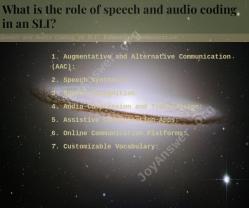What should be included in a comprehensive language assessment?
A comprehensive language assessment is designed to evaluate an individual's language skills and abilities across various domains. The specific components of a comprehensive language assessment may vary depending on the age of the individual and the purpose of the assessment (e.g., diagnosing a language disorder, assessing language development in children, evaluating language proficiency in non-native speakers). However, here are some common components that may be included in such an assessment:
Case History and Background Information: Gathering information about the individual's medical history, developmental history, family background, and any known language or communication concerns.
Standardized Tests: Administering standardized tests designed to assess various language skills, such as receptive language (comprehension), expressive language (production), phonological awareness, vocabulary, and grammar. Examples of standardized tests include the Clinical Evaluation of Language Fundamentals (CELF) and the Peabody Picture Vocabulary Test (PPVT).
Non-standardized Assessments: Using informal or non-standardized assessments to obtain a more comprehensive picture of language skills. This may involve analyzing language samples (spoken or written), conducting dynamic assessments, or using criterion-referenced tests.
Speech and Articulation Assessment: If applicable, assessing speech sound production and articulation skills to identify any speech disorders.
Pragmatic Assessment: Evaluating pragmatic or social communication skills, including the ability to engage in conversations, maintain eye contact, take turns in conversations, and understand nonverbal cues.
Fluency Assessment: Assessing fluency skills in individuals who may have fluency disorders (e.g., stuttering).
Assessment of Bilingual or Multilingual Skills: For individuals who speak multiple languages, evaluating language proficiency and abilities in each language, as well as potential code-switching or language dominance.
Assessment of Reading and Writing: Evaluating reading and writing skills, including reading comprehension, decoding skills, spelling, and writing composition.
Assessment of Assistive Technology Needs: Identifying any assistive technology or augmentative and alternative communication (AAC) needs for individuals with severe communication disorders.
Observation: Observing the individual in natural communication settings, such as during conversations with peers, family members, or teachers, to assess their functional language abilities.
Parent/Caregiver and Teacher Input: Gathering input from parents, caregivers, and teachers regarding the individual's language and communication skills in different contexts.
Cultural Considerations: Taking into account cultural and linguistic factors that may influence language development and communication styles.
Feedback and Recommendations: Providing feedback to the individual or their caregivers, along with recommendations for intervention or support services, if needed.
Report Writing: Documenting the assessment findings in a comprehensive report that summarizes the results, diagnostic impressions, and recommendations.
It's important to note that language assessments should be conducted by licensed and qualified speech-language pathologists or professionals with expertise in language assessment and intervention. The specific tests and procedures used in an assessment will be tailored to the individual's age, language background, and the purpose of the assessment. Additionally, assessments should be culturally sensitive and consider individual differences.



